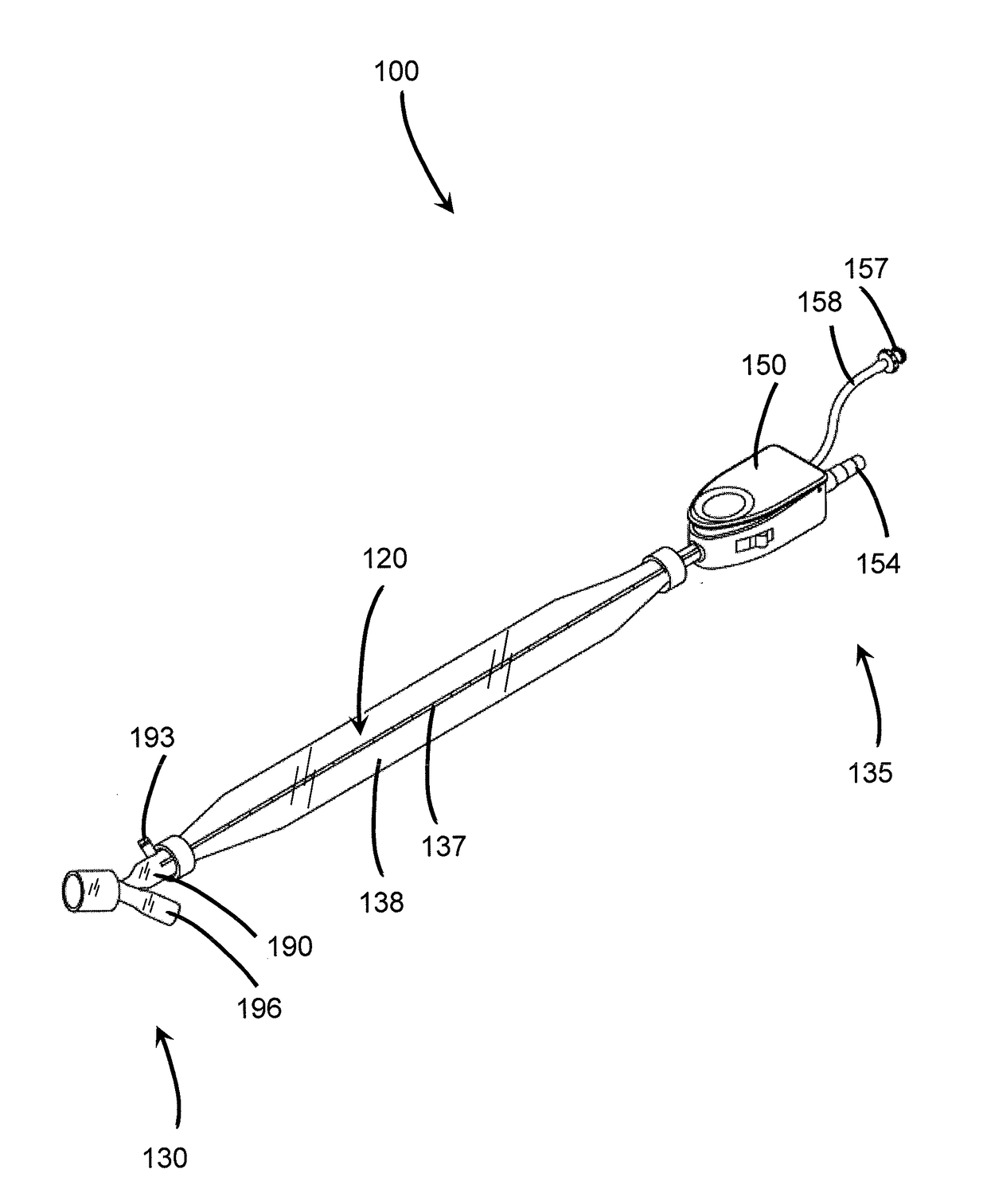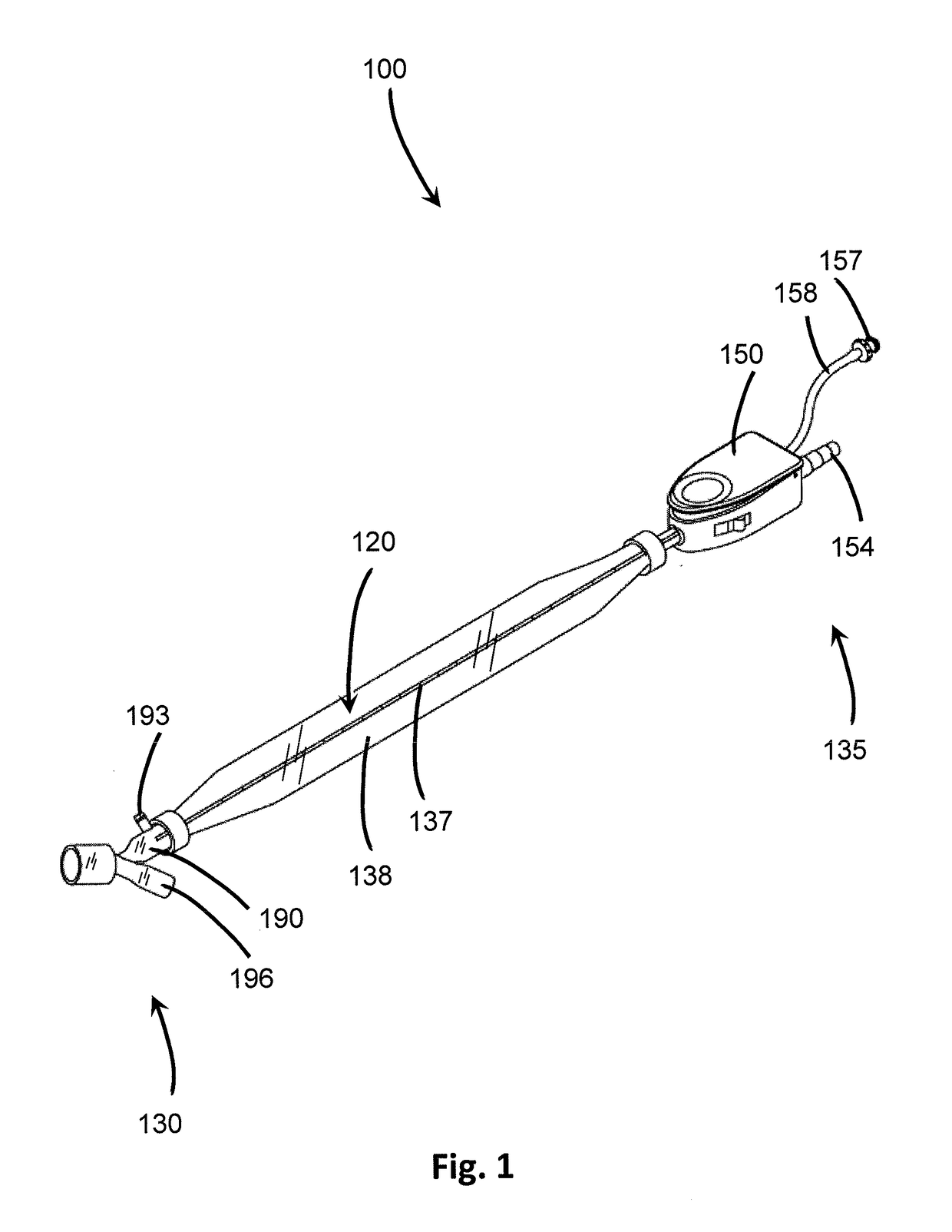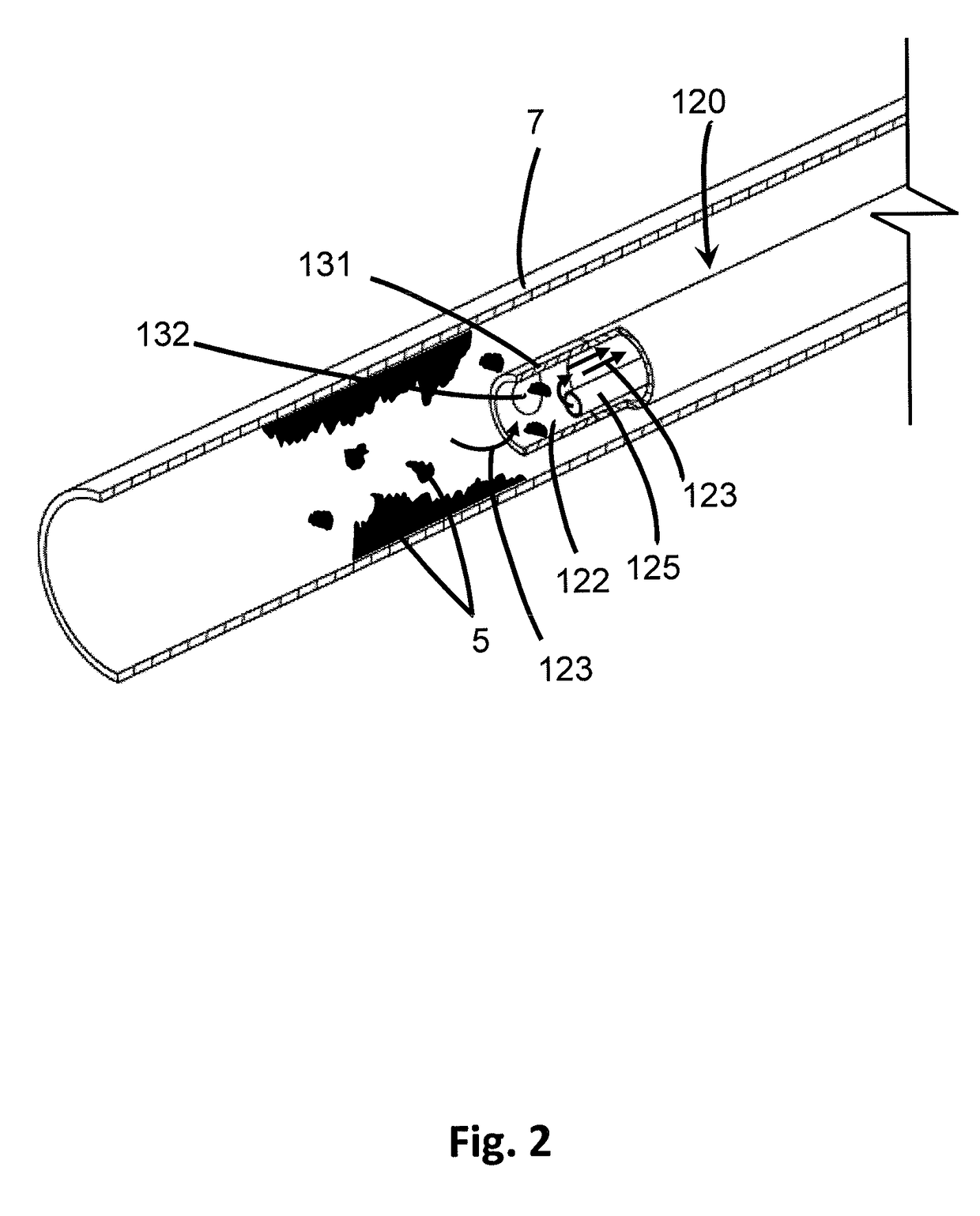Device for In Situ Clearing of Occlusions in Tubing
a tubing occlusion and in situ technology, applied in the field of medical devices, can solve the problems of inability to effectively clear the lung of intubated etts, increased airway resistance, and potentially negative impact on patient health if not remedied, so as to reduce the negative impact of suction procedure, clear secretions, and safe and quick clear etts
- Summary
- Abstract
- Description
- Claims
- Application Information
AI Technical Summary
Benefits of technology
Problems solved by technology
Method used
Image
Examples
Embodiment Construction
[0034]It is hereby noted that the term “in situ” is defined as pedal′ ling an act on an element while the element is being utilized for its commonly known function. For example, performing the act of clearing fluids or material from an ETT in situ refers to the fluids or material in an ETT while the tube is dwelling within the trachea or respiratory system of a living being, human or other.
[0035]As shown in the accompanying drawings, the present invention is directed to an occlusion clearing device which employs several features that, individually and together, enhance aspiration effectiveness while occupying less cross-sectional area compared to existing devices on the market. The need to occupy less cross-sectional area, while remaining similarly or more effective than existing devices is important, but particularly so in small diameter tubes, such as neonatal ETTs with outer diameters less than or equal to 4 mm, for reason mentioned above.
[0036]The features of the present inventi...
PUM
 Login to View More
Login to View More Abstract
Description
Claims
Application Information
 Login to View More
Login to View More - R&D
- Intellectual Property
- Life Sciences
- Materials
- Tech Scout
- Unparalleled Data Quality
- Higher Quality Content
- 60% Fewer Hallucinations
Browse by: Latest US Patents, China's latest patents, Technical Efficacy Thesaurus, Application Domain, Technology Topic, Popular Technical Reports.
© 2025 PatSnap. All rights reserved.Legal|Privacy policy|Modern Slavery Act Transparency Statement|Sitemap|About US| Contact US: help@patsnap.com



